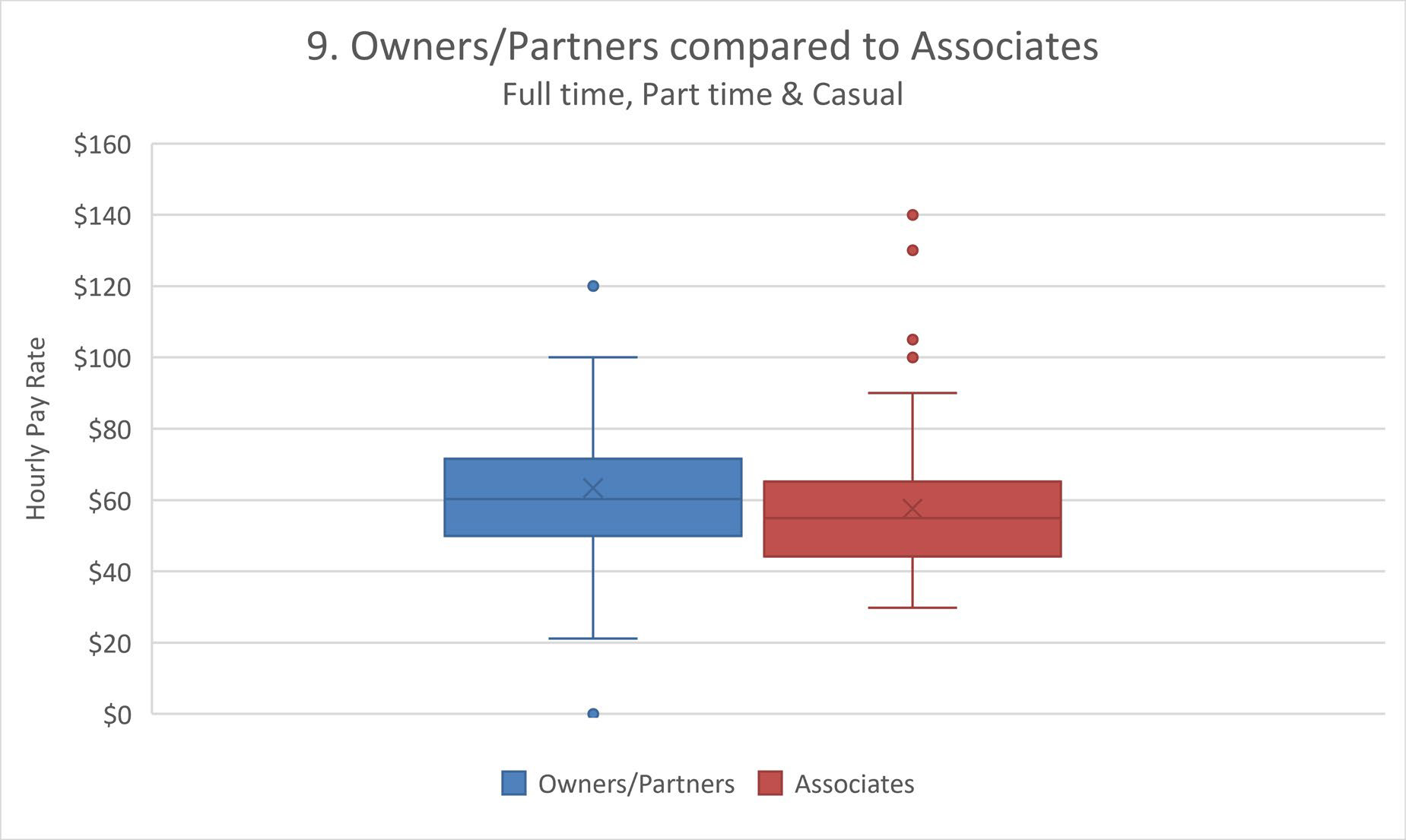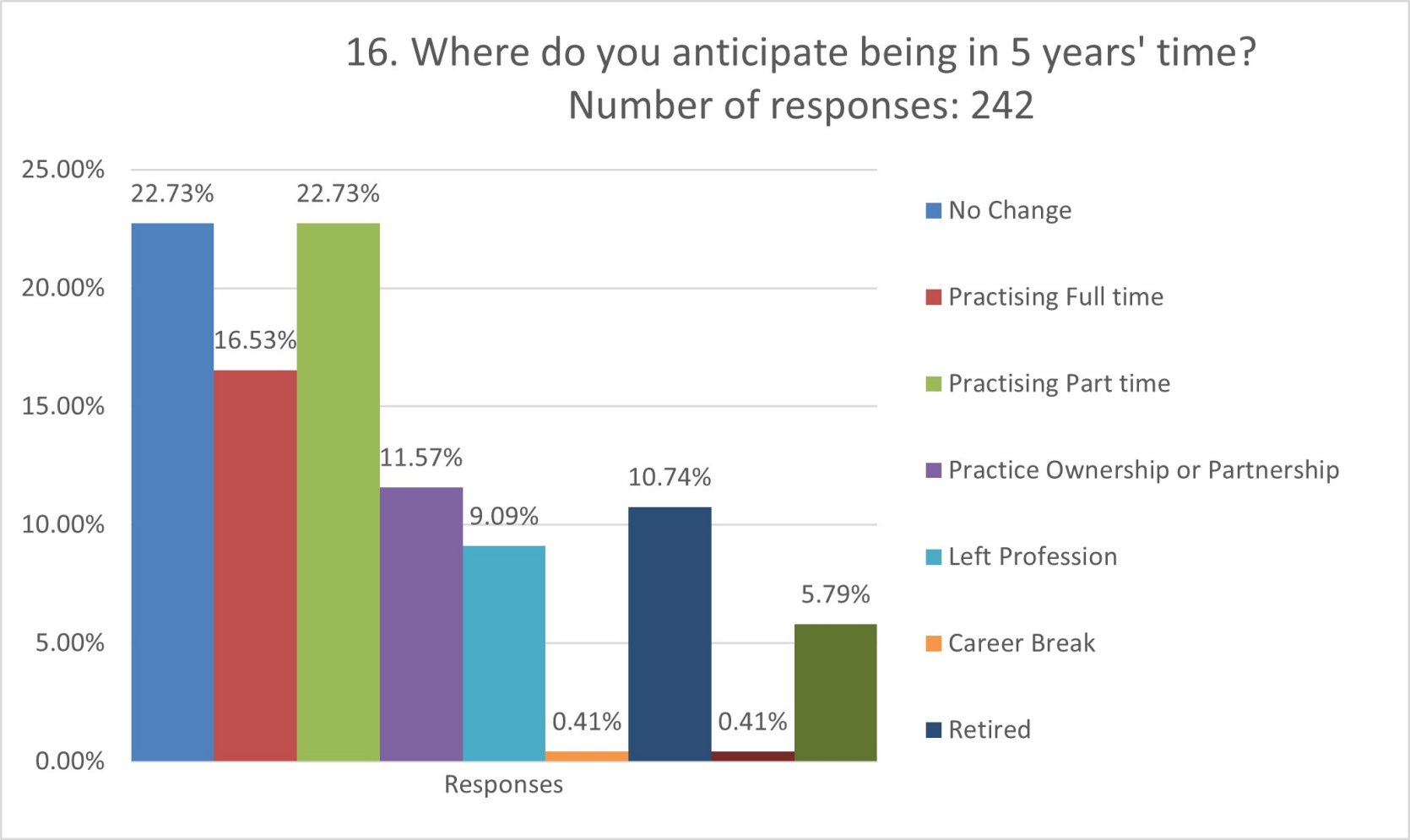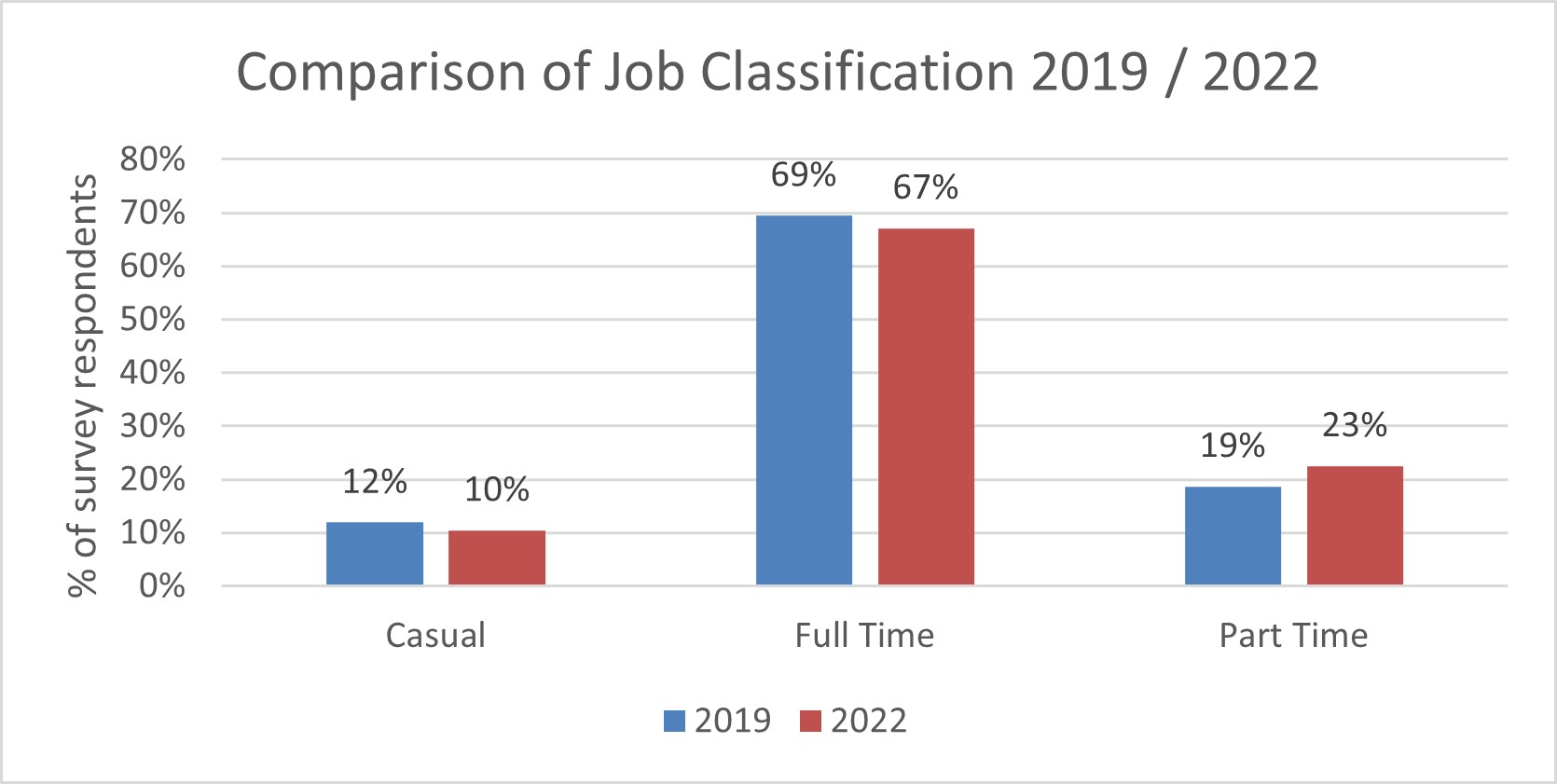2019 Salary Survey Results – Part 1
1 Thank you to all the vets who participated in this year’s Salary Survey. There was a total of 595 respondents, compared to 336 in 2017.
Thank you to all the vets who participated in this year’s Salary Survey. There was a total of 595 respondents, compared to 336 in 2017.
Results have been published in 4 separate reports, of which this is the first:
- Pay Rates compared by practice type, location, experience level, numbers of years graduated, corporate vs non-corporate, and by job classification (full time, part time, locums, and contractors)
- Gender Differences
- Out of Hours and Extras
- Happiness and Future Plans
Minimum pay rates and conditions are set in the Animal Care and Veterinary Services Award 2010, which you can find using Google, or at https://www.fwc.gov.au/documents/documents/modern_awards/award/ma000118/default.htm
Methodology
The pool of vets was contacted by direct emailing the main clinic email for all the clinics in Australia in the Kookaburra database (1,909 clinics), direct emailing all the vets currently registered as job seekers with Kookaburra ( approximately 143), and by including advertising banners with a direct link to the survey on the Australian pages of the websites www.kookaburravets.com and www.vetsuppliersdirectory.com.au , and on all the correspondence sent out from Kookaburra during the survey period. We also asked the HR departments of the major Australian corporates to assist by distributing the link to the survey to their veterinary associates. In addition, it was posted on Facebook on two of the Australian Veterinarian network closed group pages (briefly, as it was considered to be ‘advertising’ and was deleted by admin).
The survey was open from 15th July to 20th August 2019. It was hosted on Survey Monkey and analysis of results was carried out in Survey Monkey and using Microsoft Excel Office 365. The survey was anonymous, and no IP data was collected. There was a total of 16 questions.
For a Key to the box and whisker plots used, please see the Appendix at the bottom of this document
To download this Report as a printable pdf please click here
https://www.vetsuppliersdirectory.com.au/wp-content/uploads/2019/09/Survey-Results-2019-Part-1.pdf
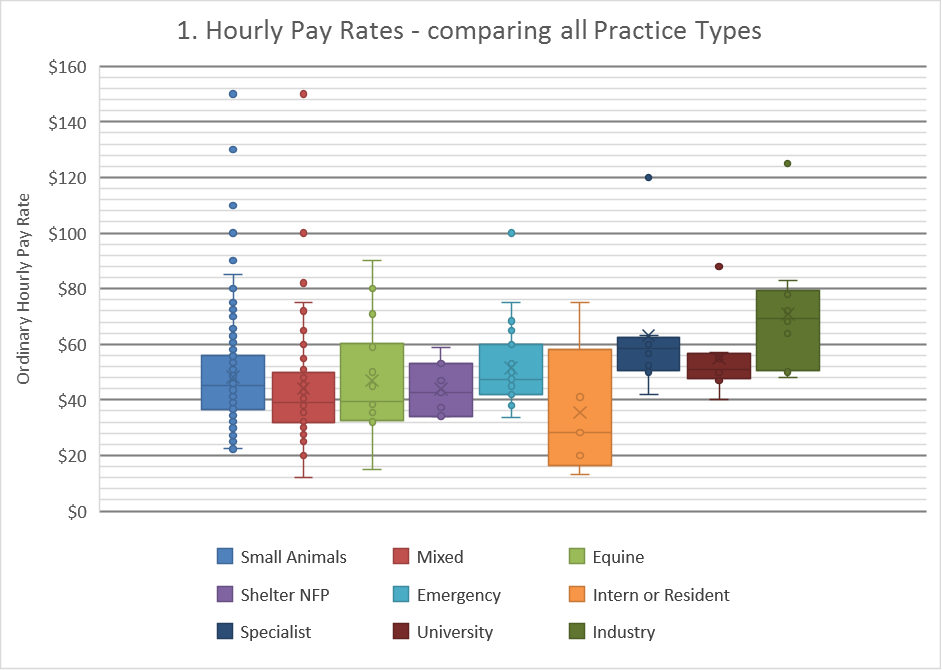

We wondered whether salary would be better correlated with another gauge of competence besides the numbers of years since graduation, so we asked respondents to self-assess their Technical Experience level according to the following scale, increasing in competence from 1 to 9, and then also including an option for non-clinical roles:
- Has broad theoretical knowledge, requires a more experienced vet to be available for discussion for consults/medicine, and guidance for surgery most of the time
- Confident for consults, requires guidance for surgery/procedures most of the time
- Confident for consults and routine surgery and seeks guidance for new procedures
- Confident for consults and routine surgery, able to work sole charge regularly
- Confident for consults, surgery, sole charge, and after hours emergencies
- Has or is working towards post graduate qualification in medicine, or other non-surgical qualification
- Has or is working towards post graduate qualification in surgery or ECC
- Has additional qualifications, supervises and teaches less experienced vets
- Has or is working towards specialist qualification
- Experienced in non-clinical / Industry roles










* Respondents gave the postcode for their current job. This was categorised according to the Australian Tax Office region and postcode definitions for the 2016-2017 tax year.
Locums
For data on Locums, we combined the data for vets classified as Casual with Self Employed Contractors. There was a total of 98 respondents in these 2 categories.

- Has broad theoretical knowledge, requires a more experienced vet to be available for discussion for consults/medicine, and guidance for surgery most of the time
- Confident for consults, requires guidance for surgery/procedures most of the time
- Confident for consults and routine surgery and seeks guidance for new procedures
- Confident for consults and routine surgery, able to work sole charge regularly
- Confident for consults, surgery, sole charge, and after hours emergencies
- Has or is working towards post graduate qualification in medicine, or other non-surgical qualification
- Has or is working towards post graduate qualification in surgery or ECC
- Has additional qualifications, supervises and teaches less experienced vets
- Has or is working towards specialist qualification
- Experienced in non-clinical / Industry roles

Corporate Practices


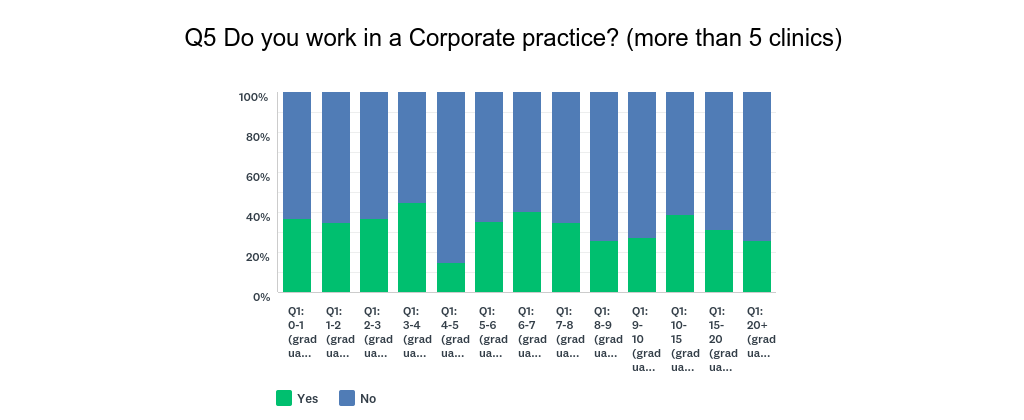
Appendix

© Copyright Kookaburra Veterinary Employment
2nd September 2019














 Australia, the UK, and New Zealand all have requirements for registered vets to keep up to date by recording a certain amount of continuing education. New Zealand and the UK have recently changed their focus from simply recording time spent on CE to actually evaluating and reflecting on the learning experience, in order to better support vets in practice, help vets find professional fulfilment, and to aid in retaining vets in the profession.
Australia, the UK, and New Zealand all have requirements for registered vets to keep up to date by recording a certain amount of continuing education. New Zealand and the UK have recently changed their focus from simply recording time spent on CE to actually evaluating and reflecting on the learning experience, in order to better support vets in practice, help vets find professional fulfilment, and to aid in retaining vets in the profession.







